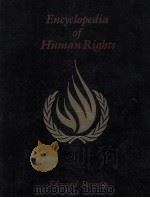《THEE BATTLE OF HUMAN RIGHTS》
| 作者 | CECILIA MEDINA QUIROGA 编者 |
|---|---|
| 出版 | MARTINUS NIJHOFF PUBLISHERS |
| 参考页数 | 363 |
| 出版时间 | 1988(求助前请核对) 目录预览 |
| ISBN号 | 9024736870 — 求助条款 |
| PDF编号 | 813695268(仅供预览,未存储实际文件) |
| 求助格式 | 扫描PDF(若分多册发行,每次仅能受理1册) |
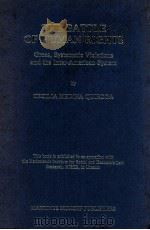
ⅠINTRODUCTION1
ⅡGROSS,SYSTEMATIC VIOLATIONS OF HUMAN RIGHTS:IN SEARCH OF A DEFINITION5
2.1.The United Nations and gross,systematic violations;the concept of "consistent pattern of gross violations of human rights"5
2.2.Gross,systematic violations;a proposal for a definition11
2.2.1.The meaning of the words11
2.2.2.The elements11
2.2.2.1.The element of quantity12
2.2.2.2.The element of time12
2.2.2.3.The element of quality12
2.2.2.3.1.The type of rights being violated13
2.2.2.3.2.The character of the violation15
2.2.2.3.3.The status of the victims15
2.2.2.4.The element of planning15
2.2.3.The definition16
2.3.Gross,systematic violations;the importance of a categorization16
ⅢTHE ORIGIN AND DEVELOPMENT OF THE PRINCIPLES OF RESPECT FOR HUMAN RIGHTS AND DEMOCRACY IN THE INTER-AMERICAN SYSTEM21
3.1.Introduction21
3.2.The beginnings of the inter-American system;a problem of unequal partners21
3.3.The inter-American system and "foreign totalitarianism";democracy as a banner against the Axis Powers23
3.3.1.The good neighbor policy and solidarity under the threat of war23
3.3.2.The Meetings of Consultation of Ministers of Foreign Affairs and the Second World War25
3.3.3.The Mexico City Conference of 1945;preparations for the post-war period27
3.3.4.Summary of the period30
3.4.The inter-American system and "foreign totalitarianism";democracy and respect for human rights in the struggle against communism30
3.4.1.Introduction30
3.4.2.The inter-American system and its first Constitution;the Organization of American States (OAS)31
3.4.3.Democracy and human rights in the Ninth International Conference of American States32
3.4.3.1.Recognition of de facto governments35
3.4.3.2.Defense and preservation of democracy in America as a containing wall against communism35
3.4.3.3.The American Declaration of the Rights and Duties of Man36
3.4.4.Democracy and human rights in the Charter of the OAS38
3.4.4.1.The principles upon which the OAS was founded38
3.4.4.2.The principles of democracy and human rights in the Charter44
3.4.4.2.1.The travaux preparatoires44
3.4.4.2.2.The provisions and their interpretation46
3.4.5.Democracy and human rights after the signing of the OAS Charter51
3.4.5.1.The Fourth Meeting of Consultation of Ministers of Foreign Affairs (Washington,D.C.,March 26-April 7,1951)51
3.4.5.2.The Tenth Inter-American Conference (Caracas,Venezuela,March 1-28,1954)52
3.4.5.3.The beginning of a new era for the protection of human rights in the Americas54
3.4.5.3.1.Democracy and the Declaration of Santiago55
3.4.5.3.2.Human Rights57
3.5.The Latin American approach:the search for ideological pluralism60
ⅣTHE INTER-AMERICAN SYSTEM FOR THE PROMOTION AND PROTECTION OF HUMAN RIGHTS PRIOR TO THE AMERICAN CONVENTION ON HUMAN RIGHTS67
4.1.The creation of the Inter-American Commission on Human Rights67
4.1.1.Origins67
4.1.2.The functions and powers of the original Commission69
4.1.2.1.Legal basis;Resolution VIII and the Statute69
4.1.2.2.The original Commission and individual communications;the starting point for the broadening of the Commission's powers71
4.1.2.3.Other activities of the Commission76
4.2.The broadening of the powers of the Commission at the Second Special Inter-American Conference of 196576
4.2.1.The Conference76
4.2.2.The new powers of the Commission;a matter of interpretation77
4.3.The Commission becomes an organ of the OAS;the amendment of the OAS Charter85
4.3.1.The Third Special Inter-American Conference;general purposes of the amendment85
4.3.2.The new status of the Inter-American Commission on Human rights87
4.4.A general view of the system prior to the American Convention on Human Rights89
ⅤTHE AMERICAN CONVENTION ON HUMAN RIGHTS93
5.1.Origins93
5.2.General contents of the Convention98
5.2.1.State obligations98
5.2.2.The rights included in the Convention101
5.2.3.Restriction of rights102
5.2.4.Suspension of rights104
5.2.5.Special rules of interpretation108
5.2.6.The organs for the promotion and protection of human rights109
5.3.Ratification or adherence109
5.4.Reservations110
5.5.Denunciation111
ⅥTHE INTER-AMERICAN COMMISSION ON HUMAN RIGHTS113
6.1.The Inter-American Commission on Human Rights in transition113
6.2.The Inter-American Commission on Human Rights and the legal basis of its powers after the entry into force of the American Convention116
6.3.Composition and functioning119
6.4.The promotional function of the Commission122
6.5.The protective function of the Commission126
6.5.1.Some general considerations126
6.5.2.Legal mechanisms at the disposal of the Commission to perform its protective function127
6.5.2.1.Fact-finding128
6.5.2.1.1.Request of information128
6.5.2.1.2.Communications128
6.5.2.1.3.Hearings128
6.5.2.1.4.Observations in loco129
6.5.2.2.Actions that the Commission may take in the performance of its protective function135
6.5.2.2.1.Recommendations135
6.5.2.2.2.Good offices and mediation135
6.5.2.2.3.Publicity139
6.5.3.The handling of communications under articles 44 through 51 of the American Convention and article 20 of the Commission's Statute144
6.5.3.1.Active and passive legitimation144
6.5.3.2.Admissibility145
6.5.3.3.Further consideration of the case147
6.5.3.4.Examination of the merits;friendly settlement149
6.5.3.5.The decision150
6.5.4.The examination of the general situation of human rights in a country;the country reports152
6.6.The annual reports of the Inter-American Commission on Human Rights156
ⅦTHE INTER-AMERICAN COURT OF HUMAN RIGHTS161
7.1.Origins161
7.2.The position of the Inter-American Court of Human Rights in the inter-American system163
7.3.Composition and functioning165
7.4.The Court's jurisdiction167
7.4.1.Contentious jurisdiction167
7.4.1.1.Procedural requirements to bring a case before the Court167
7.4.1.2.Standing to bring a case before the Court;the parties to the case168
7.4.1.2.1.The states parties to the Convention168
7.4.1.2.2.The Commission;the individual168
7.4.1.2.3.The parties to the case170
7.4.1.3.Provisional measures;a type of contentious jurisdiction171
7.4.1.4.Initial processing and examination of the case171
7.4.1.5.Final stage of the proceedings172
7.4.1.6.Enforcement of the Court's judgment173
7.4.2.Advisory jurisdiction174
7.4.2.1.Jurisdiction under article 64(1) of the Convention175
7.4.2.2.Jurisdiction under article 64(2) of the Convention181
7.4.2.3.Rules of Procedure concerning the Court's advisory jurisdiction182
7.4.2.3.1.Rules of Procedure concerning article 64(1)182
7.4.2.3.2.Rules of Procedure concerning article 64(2)182
ⅧTHE CASE OF CUBA185
8.1.Introduction185
8.2.The first stage:Human rights supervision in Cuba prior to the exclusion of the Cuban government from participation in the inter-American system187
8.2.1.The Seventh Meeting of Consultation of Ministers of Foreign Affairs (San Jose de Costa Rica,22-29 August,1960)187
8.2.2.The Inter-American Commission on Human Rights189
8.2.3.The Inter-American Peace Committee (IAPC)191
8.3.Expulsion of the Cuban government from the inter-American system193
8.3.1.The Eighth Meeting of Consultation of Ministers of Foreign Affairs (Punta del Este,Uruguay,January 22-31,1962)193
8.3.2.The importance of the Eighth Meeting of Consultation for human rights196
8.4.The second stage:Human rights supervision in Cuba after the exclusion of the Cuban government from the inter-American system199
8.4.1.The political organs of the OAS and Cuba;the Meetings of Consultation of Ministers of Foreign Affairs and the Permanent Council199
8.4.2.The Inter-American Commission on Human Rights and its competence with regard to Cuba;the reaction of the political organs202
8.4.3.The Commission's activities with regard to Cuba209
8.4.3.1.Introduction209
8.4.3.2.The Seventh Report on Cuba210
8.4.3.2.1.Form and substance210
8.4.3.2.2.The Report's final conclusions215
8.4.3.2.3.Subsequent steps216
8.4.3.3.Last events217
8.5.Summary217
ⅨTHE CASE OF NICARAGUA221
9.1.Introduction221
9.2.The Inter-American Commission on Human Rights and its first steps to supervise the human rights situation in Nicaragua222
9.3.The awakening of the political will of the OAS228
9.3.1.Introduction228
9.3.2.First international tensions229
9.3.3.Human rights come to the fore230
9.4.The Commission steps up its activities concerning Nicaragua;the Report on the Situation of Human Rights in Nicaragua232
9.4.1.Introduction232
9.4.2.The observation in loco233
9.4.2.1.Preliminary activities233
9.4.2.2.The visit234
9.4.3.The Nicaraguan Report;its substance236
9.4.4.The observations of the Nicaraguan government239
9.4.5.Further steps240
9.5.The Seventeenth Meeting of Consultation of Ministers of Foreign Affairs (Washington,D.C.,September 21,1978-June 23,1979)240
9.5.1.Introduction240
9.5.2.The agenda of the Meeting of Consultation;a conflict of issue (the September meetings)242
9.5.3.The Permanent Council as a subsidiary arena for the consideration of the Nicaraguan situation244
9.5.4.Human rights become the central theme of the 17th Meeting of Consultation (the December,1978 and June,1979 meetings)247
9.6.The significance of the case of Nicaragua for the inter-American system for the protection of human rights;the meaning of Resolution II of the Seventeenth Meeting of Consultation254
9.6.1.Introduction254
9.6.2.A governments' view255
9.6.3.A legal interpretation257
9.7.Summary259
ⅩTHE CASE OF CHILE262
10.1.Introduction262
10.2.The first stage:Chile under scrutiny;the growing significance of human rights263
10.2.1.The First Chile Report263
10.2.1.1.Preliminary steps263
10.2.1.2.Form and substance265
10.2.1.3.Preliminary recommendations269
10.2.1.4.Conclusions and final recommendations270
10.2.1.5.Approval of the report271
10.2.1.6.The observations of the Chilean government on the First Chile Report272
10.2.1.7.The First Chile Report and the political organs of the OAS275
10.2.2.The Second Chile Report276
10.2.2.1.Preliminary steps276
10.2.2.2.Form and substance278
10.2.2.3.The reaction of the Chilean government to the Second Chile Report280
10.2.2.4.The Second Chile Report and the political organs of the OAS283
10.2.3.The Third Chile Report287
10.2.3.1.Form and substance287
10.2.3.2.The Third Chile Report and the political organs of the OAS289
10.3.The second stage;Human rights under attack291
10.3.1.The Annual Report of 1977291
10.3.2.The Annual Report of 1978292
10.3.3.The Annual Report of 1979-1980293
10.3.4.The Annual Reports of 1980-1981,1981-1982 and 1982-1983294
10.3.5.The Annual Report of 1983-1984;the beginning of a change of direction295
10.4.The third stage;The Commission steps up its activities296
10.4.1.The Fourth Chile Report296
10.4.1.1.Preliminary steps296
10.4.1.2.Form and substance297
10.4.1.3.The reaction of the government of Chile302
10.4.1.4.The Fourth Chile Report and the political organs of the OAS303
10.4.2.Last events307
10.4.2.1.The Commission's 1985-1986 Annual Report and its special section on Chile307
10.4.2.2.The observations of the Chilean government309
10.4.2.3.The political organs311
10.5.Summary;Chile,a contrasting example312
ⅪINTERNATIONAL ACTION AGAINST GROSS,SYSTEMATIC VIOLATIONS OF HUMAN RIGHTS:THE LESSONS OF THE INTER-AMERICAN EXPERIENCE315
11.1.The Commission's role in the handling of gross,systematic violations;The "country report"315
11.1.1.The concept of gross,systematic violations of human rights in the inter-American system and the development of a procedure to deal with them315
11.1.2.The country report319
11.2.The role of the OAS political organs in handling gross,systematic violations321
11.3.The potential role of the Court in handling gross,systematic violations323
11.3.1.The Court's contentious jurisdiction324
11.3.2.The Court's advisory jurisdiction326
11.4.A proposal for improving the procedure to handle gross,systematic violations in the inter-American system;the integrated effort of the Commission and the OAS political organs326
11.5.The individual case before the Commission and before the Court;a possible complementary procedure329
11.6.Feasibility of the proposals329
11.7.A long-term task;addressing the root-causes of gross,systematic violations330
BIBLIOGRAPHY333
DOCUMENTS341
INDEX355
1988《THEE BATTLE OF HUMAN RIGHTS》由于是年代较久的资料都绝版了,几乎不可能购买到实物。如果大家为了学习确实需要,可向博主求助其电子版PDF文件(由CECILIA MEDINA QUIROGA 1988 MARTINUS NIJHOFF PUBLISHERS 出版的版本) 。对合法合规的求助,我会当即受理并将下载地址发送给你。
高度相关资料
-
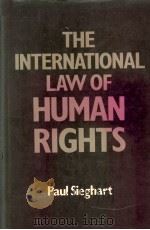
- The international law of human rights
- 1983 Clarendon Press
-

- THE NEW YORK ARBITRATION CONVENTION OF 1958
- 1981 KLUWER LAW AND TAXATION PUBLISHERS
-
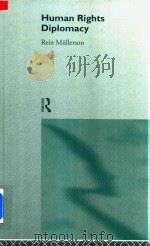
- Human Rights Diplomacy
- 1997 Routledge
-
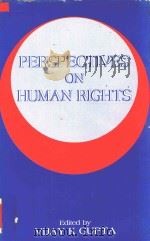
- Perspectives On Human Rights
- 1996 Vikas Publishing House PVT LTD
-

- A handbook of International Human Rights Terminology
- 1999 University of Nebraska Press
-
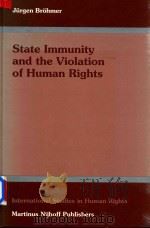
- State Immunity and the Violation of Human Rights
- 1997 Martinus Nijhoff Publishers
-
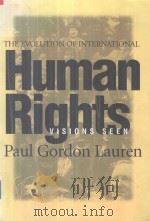
- The Evolution of International Human Rights Visions Seen
- 1998 University of Pennsylvania Press
-
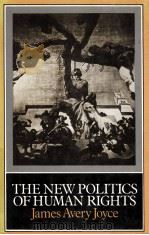
- THE NEW POLITICS OF HUMAN RIGHTS
- 1978 ST.MARTIN'S PRESS
-
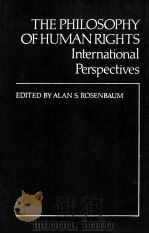
- THE PHILOSOPHY OF HUMAN RIGHTS INTERNATIONAL PERSPECTIVES
- 1980 ALDWYCH PRESS
-
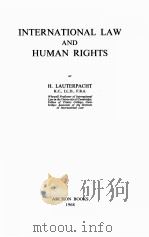
- INTERNATIONALLAW AND HUMAN RIGHTS
- 1968 ARCHON BOOKS
-

- MIORITIES A QUESTION OF HUMAN RIGHTS?
- 1984 PERGAMON PRESS
-

- PROMOTING HUMAN RIGHTS THROUGH BILLS OF RIGHTS
- 1999 OXFORD UNIVERSITY PRESS
提示:百度云已更名为百度网盘(百度盘),天翼云盘、微盘下载地址……暂未提供。➥ PDF文字可复制化或转WORD


